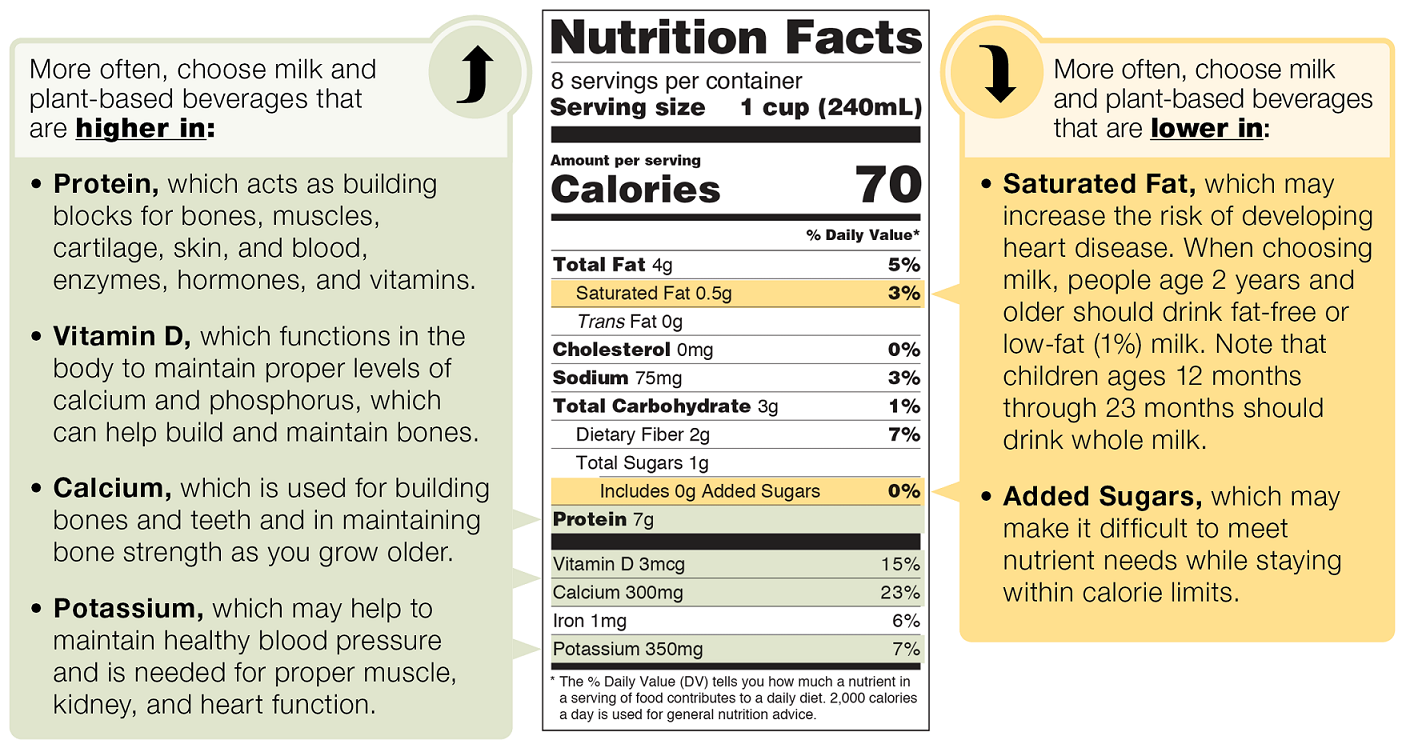Using the Nutrition Facts Label to Choose Milk and Plant-Based Beverages
Plant-based beverages, such as soy, almond, and oat beverages, are often used the same way as milk. But the Dietary Guidelines for Americans, issued by the U.S. Department of Agriculture and Department of Health and Human Services, currently only include fortified soy beverages in the dairy group because they have key nutrients similar to those found in milk. Other plant-based beverages are not currently included in the dairy group.
Nutrients in milk and fortified soy beverages are important throughout life. They are especially important to help children grow and develop. You can compare the nutrient content of different products to help you make the best choices for you and your family.
Compare Nutrients on the Nutrition Facts Label
Milk and fortified soy beverages provide nutrients that are important for health. These nutrients include protein, calcium, vitamin A, vitamin D, magnesium, phosphorus, potassium, riboflavin, vitamin B12, zinc, choline, and selenium. Some of these nutrients, such as protein, calcium, vitamin D, and potassium, are required to be listed on the Nutrition Facts label. Check the Nutrition Facts label on milk and plant-based beverages and compare nutrient amounts.
More often, choose milk and plant-based beverages that are higher in:
- Protein, which acts as building blocks for bones, muscles, cartilage, skin, and blood, enzymes, hormones, and vitamins.
- Vitamin D, which functions in the body to maintain proper levels of calcium and phosphorus, which can help build and maintain bones.
- Calcium, which is used for building bones and teeth and in maintaining bone strength as you grow older.
- Potassium, which may help to maintain healthy blood pressure and is needed for proper muscle, kidney, and heart function.
More often, choose milk and plant-based beverages that are lower in:
- Saturated Fat, which may increase the risk of developing heart disease. When choosing milk, people age 2 years and older should drink fat-free or low-fat (1%) milk. Note that children ages 12 months through 23 months should drink whole milk.
- Added Sugars, which may make it difficult to meet nutrient needs while staying within calorie limits.
Remember to check the Nutrition Facts label when selecting milk or plant-based beverages. More often choose products that are higher in nutrients to get more of and lower in nutrients to get less of.
For more details on what foods are included in the dairy group, visit https://www.myplate.gov/eat-healthy/dairy.
For personal food group advice visit https://www.myplate.gov/myplate-plan.
For more information on the Nutrition Facts label visit https://www.fda.gov/NewNutritionFactsLabel.


